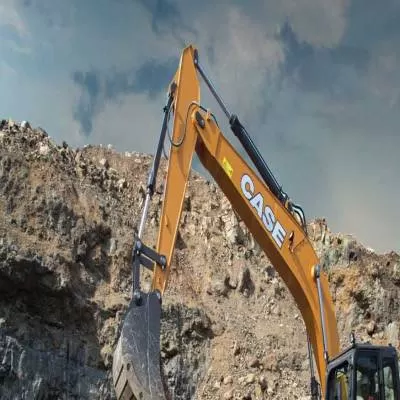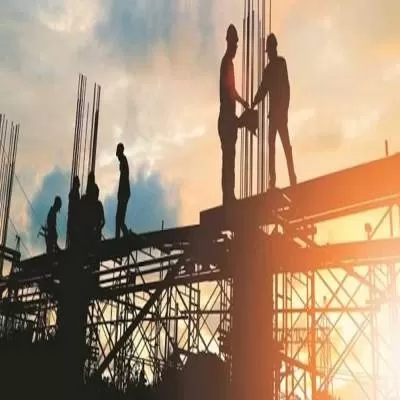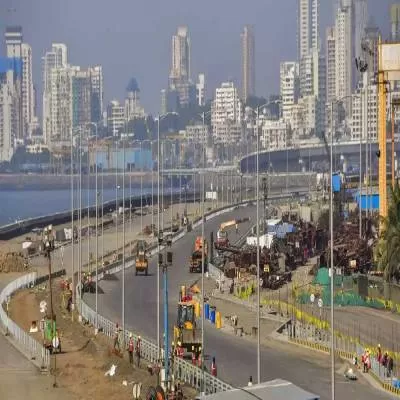- Home
- Real Estate
- Changing people's mindset - policymakers, architects, builders - is my goal
Changing people's mindset - policymakers, architects, builders - is my goal
Mili Majumdar, Director, Sustainable Habitat Division, The Energy and Resources Institute
CW presents the fourth of a series of interviews with women who have made their mark in the building sector.
For Mili Majumdar, ‘green’ is not just a buzzword - it’s a way of life. Indeed, it is her life. With 17 years of experience in The Energy and Research Institute (TERI), she leads a group of professionals to steer aspects of sustainable habitat ranging from policy analysis and development and technical assistance to energy efficiency retrofits, evaluating financial viability of green building projects and providing technical inputs to market players to cater to the needs of Indian green building markets. As a team leader, she is also responsible for business development and project management and monitoring. An architect by profession, Majumdar also led a team to develop GRIHA, the indigenous green building rating tool, which she considers her greatest achievement in a remarkable career. The author of several books and publications on sustainable buildings and a member of several bodies like the Council of Architecture, India, and Solar Energy Society of India as well as an expert for the UNEP’s eco housing network, she is astonishingly unassuming and soft-spoken, even as she tells CW that her aim to change the mindset of Indians to incorporate energy efficiency naturally in their lives. Excerpts from an exclusive interview with Group Managing Editor Falguni Padode...
Tell us about your journey with TERI.
I have been with TERI for 17 years and grown with the organisation. Today, there is a rising importance on climate change and sustainability issues. The idea of green building and sustainable habitats was actually initiated by me and another colleague. We have been able to make a mark for TERI in this area and develop its expertise. So it has not been just a job but defining a path for TERI—and the nation—in this sector.
TERI came into the limelight with Dr Rajendra Pachauri....
Yes. But when you look at him as a leader, there have to be centres of activity around him where TERI excels. One of them is sustainable habitat and TERI is recognised as a leader in the field. Dr Pachauri has given us a lot of inspiration and direction. In fact, the genesis of GRIHA, the national rating system, came from him. We were earlier working with the international rating system and Dr Pachauri realised we needed something indigenous. It was his brainchild and we took it forward.
What did GRIHA seek to achieve?
We sought to achieve a system that would be well understood by the community considering the Indian context. We have various bodies that set standards where the construction sector is concerned: the Bureau of Energy Efficiency; Ministry of Environment and Forests; DIA clearance; Ministry of New and Renewable Energy; and so on. There was a necessity to put it all together. Second, if you look at our architectural style and practices, we have a very rich history. But over the years because of globalisation and trying to ape the West, we have adopted an architecture that does not reflect our climate. One example is the extensive use of glass. It is apt for the West because there you need to heat a building; here you need to cool it. So there is a basic difference. And if you look at our ancient architecture, we had fewer windows, thicker walls, shading...all things that we have lost somehow. So through the rating, we wanted to address these issues and adopt something that integrates Indian policies, programmes and standards. The idea behind GRIHA is to approach design through efficient architecture; then adopt energy code requirements and further build in efficiency. And then when you have a reduced demand, GRIHA also mandates usage of a certain portion of renewable energy. All GRIHA buildings have to have an element of solar or wind power. That is another national priority, the mission on solar energy. We are working closely with the Government of India on it and it is now mandated in all Central Government buildings.
People are still talking about the international LEED rating though. Not many are coming forward to say they have a GRIHA rating.
I agree; we still have the tendency of going with the international rating. But now it is catching up. There hasn’t been a concerted marketing effort because we were working to refine the system and getting the government on board. Now, things are looking up and we are actively engaging with the private sector.
Could you name a few private players you have worked with for GRIHA?
There are a few projects with Goel Ganga in Pune and one with Hiranandani in Mumbai. We worked with the Commonwealth Games Village. Despite the controversies, it is a green building and fully compliant with ECBC [Energy Conservation Building Code]. We are working with corporate houses like ITC and the Fortis hospital group.
You are also working with UNEP and banking institutions for lifecycle costs....
One of the myths about energy-efficient building is that it costs too much. In India, we do not have a standardised base cost so this is a very notional idea. You invest more in things like insulation, better glass and more efficient equipment. But when you introduce these things, your size of equipment comes down. For example if you use an insulated roof or a wall and high-performance glass, the size of your air-conditioner would be halved or even less; so you save there. Through computer-based simulation, you can now calculate a building’s energy performance over its whole lifecycle. Then you realise that despite the initial cost, the payback period will not be more than a maximum of two or three years while the building life would be 70 years or even more. That’s a win-win situation. Currently, we are also working on a National Housing Bank (NHB) driven initiative with a KSW Bank of Germany. NHB has signed a loan agreement with KSW to give low-interest loans to promote energy-efficient housing. So we are developing an assessment tool to help the NHB determine what qualifies as an energy-efficient building. KSW has been doing this in Germany for the past 20-30 years; that tool is now being customised for India. We will now have to advise builders on what they need to do to qualify for the loan.
You have tied up with the Clinton Climate Foundation as a technical partner. What’s your role?
Our role is basically one of a technical facilitator to identify projects and set them up for retrofit application. It has not been very successful in the government sector so far because the procedures are not conducive to a fast-track mode and cause delays. However, in the private sector there are people adopting it and internationally it has been a successful programme.
You have also worked in disaster management and with the rural poor....
We had worked with the UNEP after the tsunami to look at rehabilitation projects in Sri Lanka, Maldives and Indonesia. In the role of an international consultant, we examined the use of local materials, indigenous technologies and design to achieve maximum comfort at minimum cost. With the rural poor, the aim is the same - the focus is on using local building materials, providing basic sanitation, clean water and hygiene.
What do you think of the budget provisions for energy conservation?
There is really not much. Here, I would like to echo the Bureau of Energy Efficiency’s view that energy efficiency is a win-win situation so you really don’t need incentives to promote it. As soon as you give subsidies, people tend not to do things without them.
Aren’t many people just using the word ‘green’ to give their project better marketability?
It depends on how you believe in green and what you mean by it. There is a lot of ‘green washing’ happening among people who want to do it just for the sake of certification. But if your real interest is to save energy for yourself and the world, you wouldn’t look at it just as a buzzword. Awareness levels really need to go up.
Is there a GRIHA kind of rating system for materials?
We are actually in the process of developing that. However, in India, even if you try to certify materials and products, how do you ensure these standards will be met? There is no lab or regulatory body to govern it. It’s a tall task.
You’ve attended many international forums; in your experience, where do we stand as Indians?
We are much more grounded. I have travelled extensively over the world and have seen how people talk about green while they practise something else. In India, we are a largely populated country and do not have access to so much wealth and resources. So we end up conserving automatically. Just look at our per capita consumption and even building density. In developed countries, the space occupied per person is much higher. So by nature we are green and do not have to do too much to qualify ourselves as such. Now, we are trying to be greener. In many cases, we have adopted a path of inefficiency and then are trying to go back to tradition. However, people in the West are more disciplined.
Is it easy to implement these initiatives considering the speed and spirit with which our government works?
It totally depends on the leadership. There are municipalities that have done very well. Take the example of Surat; it has managed its climate adaptation needs very well. Similarly, there are several other cities in Gujarat that are very good. And then there are cities that are completely out of tune.
You are an architect by training; yet, your work in TERI involves business development as well. How does this work for you, in terms of developing new skill sets?
These are skills I have developed over the years. By way of the institutional structure in TERI, we are all ‘Research Entrepreneurs’, so it means our research or area of work has to have market applicability and acceptance. As soon as you connect the two, you will automatically develop both skills. So you will do what is technically required and you will also find a client who needs it. And you will try and generate a business around it and make it and make a case out of it. It is challenging because as competition builds up in the field, you have to constantly innovate and find a niche for yourself. This field offers you that capability in terms of technological innovation, research innovation, working at a policy level and building capacities of people.
How many policies that you been involved with, have fructified?
There’s GRIHA of course, which has been a change maker in the way the government sector is moving. We are also part of the National Habitat Mission; we have worked on the Climate Change Action Plan and are developing the details of the National Habitat Mission. There’s ECBC. We have developed guidelines for the Ministry of Environment and Forests for environment assessment and clearance for large construction projects. We are working with different states and trying to integrate energy efficiency with building bylaws through the Bureau of Energy Efficiency. So we are involved with all major policy initiatives happening in the country.
With such a demanding career, how do you maintain the work-life balance?
It’s pretty hectic but also enjoyable. If you’re happy with your work, you don’t feel the stress. At home, I have a very supportive husband, a 15 year-old daughter and my mother who looks after us all and takes care of the home because I travel a lot. This support system helps me manage. I also try to have as much as fun as possible with friends, going out on holidays, watching films, eating out, shopping! So maintaining the balance has not been so hard. I am also inspired by Dr Pachauri who is so positive; he’s so modest and humble, yet so passionate about his work. The more you see him doing, you feel you are doing so little.
How would you describe your own journey over the years?
The challenge has been to rise above the competition; to be the best at what you do personally, professionally; to be able to motivate a team.
How do you motivate your people?
I work with them. I do not consider myself as an individual who can succeed; it’s all about teamwork and you have to work as one among many. I give my people support; there is no blame game, no backbiting allowed; nobody can complain against the other. I try to maintain a professional atmosphere.
And what motivates you?
My motivating factors are my work and my family.
What is your goal?
So many things are getting done wrong in terms of how people design and construct a habitat in the total urban scheme. We need to change people’s mindset. It needs to be an inner realisation and not something you do for the sake of getting a stamp or star. Changing this mindset is my goal...for the policymakers, consumers, architects, builders, everybody.
What has been the pinnacle of your career?
I would say the time I had to make a presentation where all the secretaries of the ministries were there, where GRIHA was considered to be a mandate in all central government buildings. I made the presentation with all the top bureaucrats and got it approved. It was an achievement for GRIHA, and a moral boost for me.
- Construction
- Update
- Portal
- Magazine
- CW-India
- April
- 2011
- India
- Mili Majumdar
- The Energy and Resources Institute
- energy efficiency
- green building markets
- GRIHA
- Council of Architecture
- Solar Energy Society of India
- UNEP
- climate change
- Dr Pachauri
- Bureau of Energy Efficiency
- renewable energy
- Goel Ganga
- Pune
- Hiranandani
- Mumbai
- ECBC
- National Housing Bank
- KSW Bank
- Germany
- UNEP
- Sri Lanka
- Bureau of Energy Efficiency
- Surat
- Climate Change Action Plan
Mili Majumdar, Director, Sustainable Habitat Division, The Energy and Resources Institute CW presents the fourth of a series of interviews with women who have made their mark in the building sector. For Mili Majumdar, ‘green’ is not just a buzzword - it’s a way of life. Indeed, it is her life. With 17 years of experience in The Energy and Research Institute (TERI), she leads a group of professionals to steer aspects of sustainable habitat ranging from policy analysis and development and technical assistance to energy efficiency retrofits, evaluating financial viability of green building projects and providing technical inputs to market players to cater to the needs of Indian green building markets. As a team leader, she is also responsible for business development and project management and monitoring. An architect by profession, Majumdar also led a team to develop GRIHA, the indigenous green building rating tool, which she considers her greatest achievement in a remarkable career. The author of several books and publications on sustainable buildings and a member of several bodies like the Council of Architecture, India, and Solar Energy Society of India as well as an expert for the UNEP’s eco housing network, she is astonishingly unassuming and soft-spoken, even as she tells CW that her aim to change the mindset of Indians to incorporate energy efficiency naturally in their lives. Excerpts from an exclusive interview with Group Managing Editor Falguni Padode... Tell us about your journey with TERI. I have been with TERI for 17 years and grown with the organisation. Today, there is a rising importance on climate change and sustainability issues. The idea of green building and sustainable habitats was actually initiated by me and another colleague. We have been able to make a mark for TERI in this area and develop its expertise. So it has not been just a job but defining a path for TERI—and the nation—in this sector. TERI came into the limelight with Dr Rajendra Pachauri....Yes. But when you look at him as a leader, there have to be centres of activity around him where TERI excels. One of them is sustainable habitat and TERI is recognised as a leader in the field. Dr Pachauri has given us a lot of inspiration and direction. In fact, the genesis of GRIHA, the national rating system, came from him. We were earlier working with the international rating system and Dr Pachauri realised we needed something indigenous. It was his brainchild and we took it forward. What did GRIHA seek to achieve?We sought to achieve a system that would be well understood by the community considering the Indian context. We have various bodies that set standards where the construction sector is concerned: the Bureau of Energy Efficiency; Ministry of Environment and Forests; DIA clearance; Ministry of New and Renewable Energy; and so on. There was a necessity to put it all together. Second, if you look at our architectural style and practices, we have a very rich history. But over the years because of globalisation and trying to ape the West, we have adopted an architecture that does not reflect our climate. One example is the extensive use of glass. It is apt for the West because there you need to heat a building; here you need to cool it. So there is a basic difference. And if you look at our ancient architecture, we had fewer windows, thicker walls, shading...all things that we have lost somehow. So through the rating, we wanted to address these issues and adopt something that integrates Indian policies, programmes and standards. The idea behind GRIHA is to approach design through efficient architecture; then adopt energy code requirements and further build in efficiency. And then when you have a reduced demand, GRIHA also mandates usage of a certain portion of renewable energy. All GRIHA buildings have to have an element of solar or wind power. That is another national priority, the mission on solar energy. We are working closely with the Government of India on it and it is now mandated in all Central Government buildings. People are still talking about the international LEED rating though. Not many are coming forward to say they have a GRIHA rating.I agree; we still have the tendency of going with the international rating. But now it is catching up. There hasn’t been a concerted marketing effort because we were working to refine the system and getting the government on board. Now, things are looking up and we are actively engaging with the private sector. Could you name a few private players you have worked with for GRIHA?There are a few projects with Goel Ganga in Pune and one with Hiranandani in Mumbai. We worked with the Commonwealth Games Village. Despite the controversies, it is a green building and fully compliant with ECBC [Energy Conservation Building Code]. We are working with corporate houses like ITC and the Fortis hospital group. You are also working with UNEP and banking institutions for lifecycle costs.... One of the myths about energy-efficient building is that it costs too much. In India, we do not have a standardised base cost so this is a very notional idea. You invest more in things like insulation, better glass and more efficient equipment. But when you introduce these things, your size of equipment comes down. For example if you use an insulated roof or a wall and high-performance glass, the size of your air-conditioner would be halved or even less; so you save there. Through computer-based simulation, you can now calculate a building’s energy performance over its whole lifecycle. Then you realise that despite the initial cost, the payback period will not be more than a maximum of two or three years while the building life would be 70 years or even more. That’s a win-win situation. Currently, we are also working on a National Housing Bank (NHB) driven initiative with a KSW Bank of Germany. NHB has signed a loan agreement with KSW to give low-interest loans to promote energy-efficient housing. So we are developing an assessment tool to help the NHB determine what qualifies as an energy-efficient building. KSW has been doing this in Germany for the past 20-30 years; that tool is now being customised for India. We will now have to advise builders on what they need to do to qualify for the loan. You have tied up with the Clinton Climate Foundation as a technical partner. What’s your role?Our role is basically one of a technical facilitator to identify projects and set them up for retrofit application. It has not been very successful in the government sector so far because the procedures are not conducive to a fast-track mode and cause delays. However, in the private sector there are people adopting it and internationally it has been a successful programme. You have also worked in disaster management and with the rural poor....We had worked with the UNEP after the tsunami to look at rehabilitation projects in Sri Lanka, Maldives and Indonesia. In the role of an international consultant, we examined the use of local materials, indigenous technologies and design to achieve maximum comfort at minimum cost. With the rural poor, the aim is the same - the focus is on using local building materials, providing basic sanitation, clean water and hygiene. What do you think of the budget provisions for energy conservation?There is really not much. Here, I would like to echo the Bureau of Energy Efficiency’s view that energy efficiency is a win-win situation so you really don’t need incentives to promote it. As soon as you give subsidies, people tend not to do things without them. Aren’t many people just using the word ‘green’ to give their project better marketability?It depends on how you believe in green and what you mean by it. There is a lot of ‘green washing’ happening among people who want to do it just for the sake of certification. But if your real interest is to save energy for yourself and the world, you wouldn’t look at it just as a buzzword. Awareness levels really need to go up. Is there a GRIHA kind of rating system for materials?We are actually in the process of developing that. However, in India, even if you try to certify materials and products, how do you ensure these standards will be met? There is no lab or regulatory body to govern it. It’s a tall task. You’ve attended many international forums; in your experience, where do we stand as Indians?We are much more grounded. I have travelled extensively over the world and have seen how people talk about green while they practise something else. In India, we are a largely populated country and do not have access to so much wealth and resources. So we end up conserving automatically. Just look at our per capita consumption and even building density. In developed countries, the space occupied per person is much higher. So by nature we are green and do not have to do too much to qualify ourselves as such. Now, we are trying to be greener. In many cases, we have adopted a path of inefficiency and then are trying to go back to tradition. However, people in the West are more disciplined. Is it easy to implement these initiatives considering the speed and spirit with which our government works?It totally depends on the leadership. There are municipalities that have done very well. Take the example of Surat; it has managed its climate adaptation needs very well. Similarly, there are several other cities in Gujarat that are very good. And then there are cities that are completely out of tune. You are an architect by training; yet, your work in TERI involves business development as well. How does this work for you, in terms of developing new skill sets?These are skills I have developed over the years. By way of the institutional structure in TERI, we are all ‘Research Entrepreneurs’, so it means our research or area of work has to have market applicability and acceptance. As soon as you connect the two, you will automatically develop both skills. So you will do what is technically required and you will also find a client who needs it. And you will try and generate a business around it and make it and make a case out of it. It is challenging because as competition builds up in the field, you have to constantly innovate and find a niche for yourself. This field offers you that capability in terms of technological innovation, research innovation, working at a policy level and building capacities of people. How many policies that you been involved with, have fructified?There’s GRIHA of course, which has been a change maker in the way the government sector is moving. We are also part of the National Habitat Mission; we have worked on the Climate Change Action Plan and are developing the details of the National Habitat Mission. There’s ECBC. We have developed guidelines for the Ministry of Environment and Forests for environment assessment and clearance for large construction projects. We are working with different states and trying to integrate energy efficiency with building bylaws through the Bureau of Energy Efficiency. So we are involved with all major policy initiatives happening in the country. With such a demanding career, how do you maintain the work-life balance?It’s pretty hectic but also enjoyable. If you’re happy with your work, you don’t feel the stress. At home, I have a very supportive husband, a 15 year-old daughter and my mother who looks after us all and takes care of the home because I travel a lot. This support system helps me manage. I also try to have as much as fun as possible with friends, going out on holidays, watching films, eating out, shopping! So maintaining the balance has not been so hard. I am also inspired by Dr Pachauri who is so positive; he’s so modest and humble, yet so passionate about his work. The more you see him doing, you feel you are doing so little. How would you describe your own journey over the years?The challenge has been to rise above the competition; to be the best at what you do personally, professionally; to be able to motivate a team. How do you motivate your people?I work with them. I do not consider myself as an individual who can succeed; it’s all about teamwork and you have to work as one among many. I give my people support; there is no blame game, no backbiting allowed; nobody can complain against the other. I try to maintain a professional atmosphere. And what motivates you?My motivating factors are my work and my family. What is your goal?So many things are getting done wrong in terms of how people design and construct a habitat in the total urban scheme. We need to change people’s mindset. It needs to be an inner realisation and not something you do for the sake of getting a stamp or star. Changing this mindset is my goal...for the policymakers, consumers, architects, builders, everybody. What has been the pinnacle of your career?I would say the time I had to make a presentation where all the secretaries of the ministries were there, where GRIHA was considered to be a mandate in all central government buildings. I made the presentation with all the top bureaucrats and got it approved. It was an achievement for GRIHA, and a moral boost for me.






















